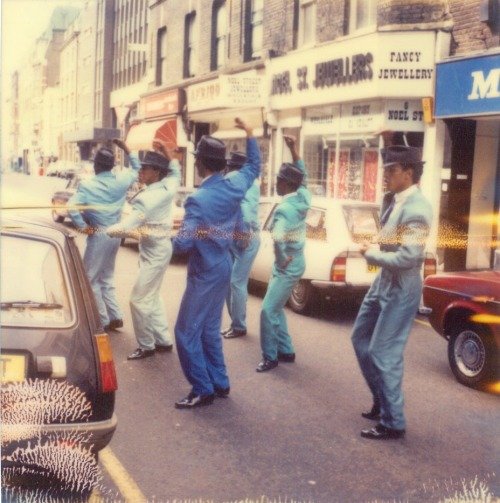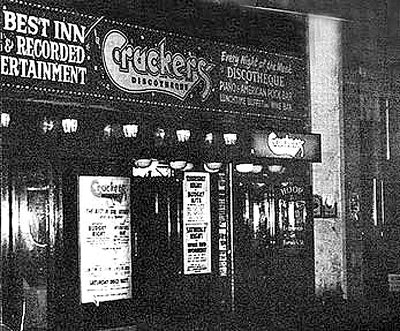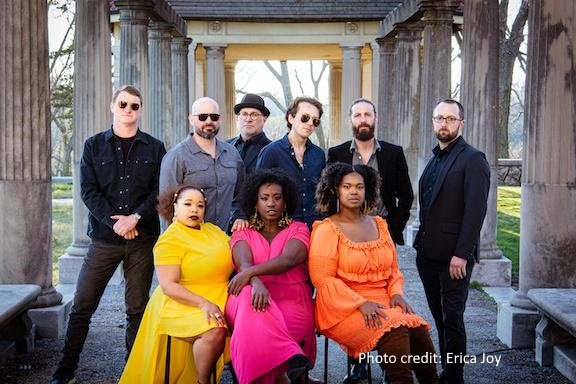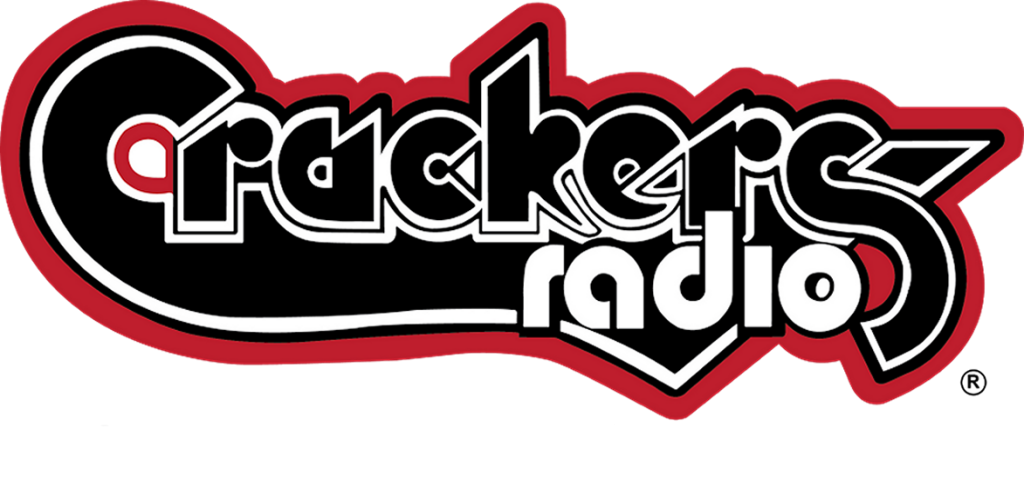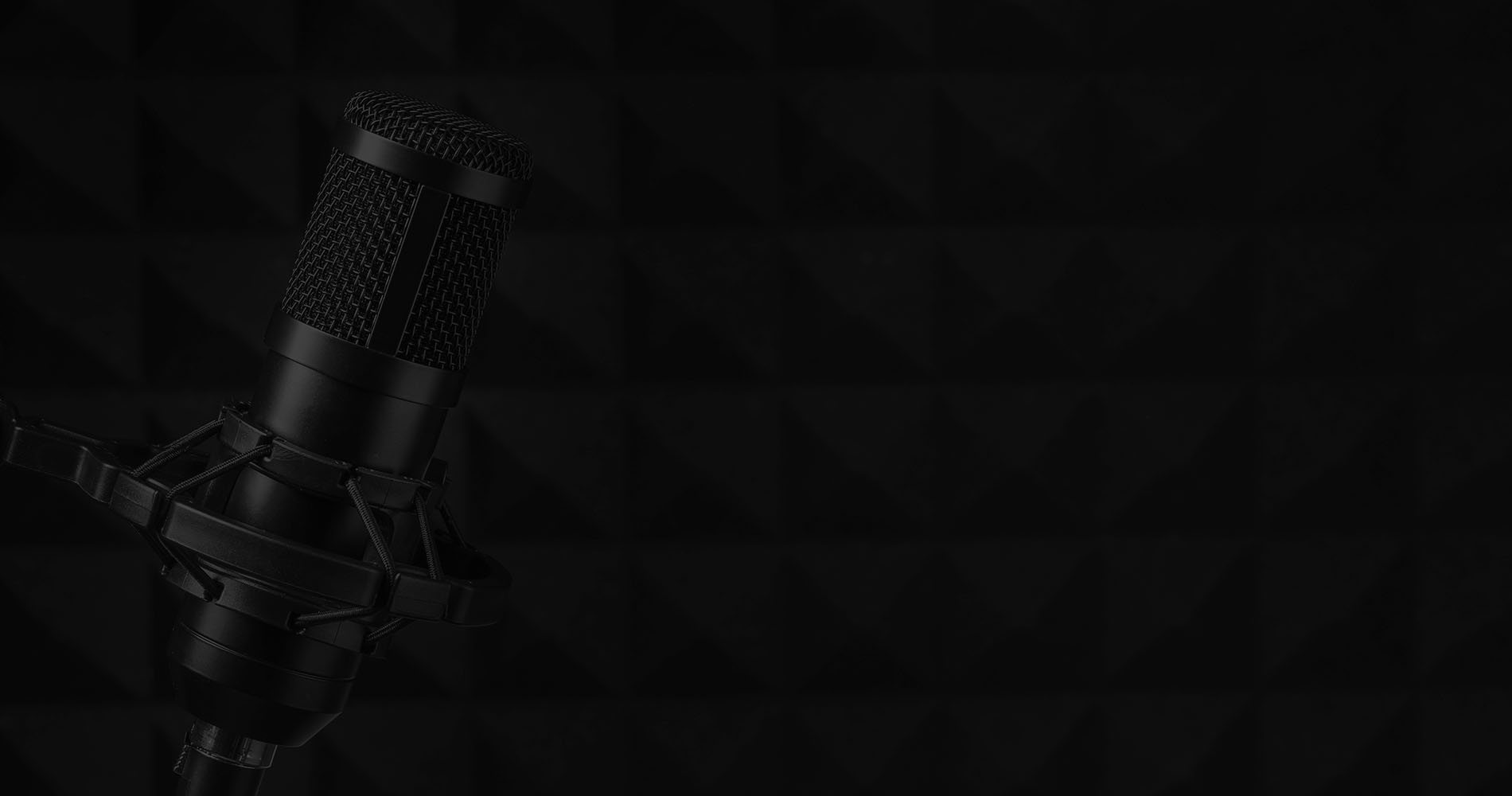An oral history of the forgotten dancers that set London on fire in the late ’70s
An extensive essay from Terry Farley celebrating the legendary dancers that made the London club scene what it was in the late ’70s. In the course of the research, Farley and Roual Galloway interviewed a number of these forgotten club characters. Below, we present the dancers (and a few DJs and clubgoers that loved them) in their own words.
TOMMY MCDONALD, DANCER
“The best dancers were like pop stars without a record.”
CLIVE CLARKE, DANCER
I loved Crackers during the Mark Roman era. We were coming out of a period in London where there were very few clubs other than the Birds Nest chain that had a history of allowing blacks boys in. We didn’t drink enough for the management’s liking. So in retrospect, Crackers was a fantastic club for its time and led the way for other West End night clubs to open up their doors to this mass of energetic young dancers, who by their presence brought in the other important element of good theatre – the audience.
TOMMY MCDONALD, DANCER
I can remember in the early Crackers days there would only be a few white kids down there on a Tuesday night. When there was a dance competition, all the serious dancers would have to go on a pivotal bit and do your three to five minutes of dance. I can’t remember if I won, but the crowd were giving out loads of Zulu noises. I was accepted as a white dancer because I could match them, that’s all it was. At that time there was about 15 or 20 dancers in that club better than me. That just gave me more confidence and a greater passion to get better as a dancer.
The thing about dancing is that you can go out to a club one night and you can be the best dancer there. For one night it clicks and every move comes out, every spin comes off, every pirouette comes off and you can be the best dancer ever. Then on another night nothing comes off and you can be the worst. I’ve been there when I’ve been too scared to get on the floor or I’ve seen Clive [Clarke] dancing against Horace [Carter] and thinking I’m not dancing tonight because they’ll make me look bad. It’s a confidence thing.
“Tommy McDonald was something else; he was a force of nature.”
John Quinn
JOHN QUINN, DANCER
When I first met Tommy [McDonald] he looked like he’d just run away from a gypsy camp. I can remember even now what he was wearing – a black mohair jumper and he had a big black and white circle earring. I remember thinking that I’ve seen a lot of people, been around during the hippie times, and sat around smoking more dope I care to think about, but Tommy was something else; he was a force of nature. When he hit that dancefloor he was unbelievable and fearless. He danced anywhere and he didn’t give a shit whether it was all black guys or white guys. It didn’t matter to him. He was always fun to be with. He saved my arse on many occasions.
MARK ROMAN, DJ
Tuesday night had a big fat zero amount of people when I started it. We went from no-one to one night in the middle of winter when we had more than 1,000 people there. The walls were wet with water dripping down them. My stylus on the turntable was picking fluff up like fuck, the air seemed to so thick you could cut it, that night was like no other night I have ever known, it was so rammed I had to piss in a glass under the decks. I had no chance of getting through the dancers to the toilet and back in time.
CHRIS SULLIVAN, DANCER AND CLUB RUNNER
At the time a few of the faster tunes were coming in and going away from the funk. Because of the northern soul thing I used to do fast footwork stuff with spins and falls. I started coming in and doing that stuff, which not a lot of people had been doing. Their dancing was much more jazz funky in a way. Mine was more frenetic with short bursts of really fast footwork with a back drop and the splits. It was just a different style. That’s how I got to know a lot of all these people because I’d jump into the middle of it and they’d be like, “Where did this bloke come from?”
You had to be good to get into the middle. Horace was a really good dancer. Tommy was good before he got too balletic. I like the more street style dancing myself. Trevor Shakes was really good as well. They all had different styles. There was a really good guy who came from Southend, who was really tall with black hair. You remembered somebody who would spin 360 degrees and land into the splits. Being a good dancer was massively important. I didn’t drink, so that’s all that I did.
One of the big dances was the bump, which is the one that I used to like. I thought that was great. We used to go places and there would 12 people in a row doing a synchronised bump. There were some fantastic dancers back then. Everybody had their own style.
ACME ERIC, DANCER AND CLUB FACE
“In those days nobody was over about 22 years old and eight stone.”
JOHN QUINN, DANCER
Tommy could do this spin and he was famous for being able to do it. Everybody wanted to copy it, but he did it properly. It’s called spotting where you kept your head straight but you whip your head around. I originally thought he’d been told how to do that. He told me that he’d gone to Barbara Speake Stage School.
ERNIE BAPTISTE
Along with the dancers came the dance-offs. These would tend to break out to the tougher tracks being dropped at the time. They were normally one on one, but I have witnessed and been part of a multiple dance off. The participants would normally keep their distance on the floor while checking out the opposition, showing just enough to dominate their space on the floor. At some point in the evening the tune would drop, the two steppers would withdraw to a safe distance and battle would commence.
If it was a tune you knew well you could pace yourself, dropping the moves in order of difficulty, making sure you finished strong. These were part and parcel of club life. The toughest dance-off I’ve witnessed had to be in The Goldmine, between my old mate Clive Clarke and Philip Tan. Two top dancers on top of their game, the reward a place in the televised section of the old Disco Dance competition. They gave it absolutely everything, somersaults, back flips, quadruple spins, combos which included splits, lung-busting steps, the crowd going mental. Robbie Vincent was the DJ and he had to admit that he couldn’t split them, he let the crowd decide. Clive nicked it, I’ve never seen anything like it, it was awesome.
PAUL ANDERSON, DANCER AND DJ
Over the years there were numerous dancers, but the headliners were probably Horace Carter; Franklyn; Peter Francis; Clive Clarke; Pinkie; the Walker brothers; Jabba, he was a crazy dancer; Mohammed; Oily Baker, he’s now a big-time choreographer, of course; Trevor, when he appeared at Crackers.
Trevor Shakes, he was the main guy in London for me, I think most people would agree, he was the main boy in London at the time for dancing, with the latest moves. It was just like fashion. Someone would come up with the new moves and it was generally Trevor. He’d come back from one of his trips, ‘cause he was a top model and everything, Later on he took me under his wing and I was in two of his dance groups, and I was doing live fashion shows on roller skates and stuff. That was thanks to Trevor and George and people like that.
Every week practically, there was a new move. Then the whole of London would be doing it. You’d go to other clubs and they’d be doing it… in those days, Studio 21 and Crackers and those clubs, Maunkberry’s, Spats, The Maze, these were the places where all the moves originated.
GARY HAISMAN
My inspiration for dancing came from Jabba and Leon Herbert, I did not want to dance like Tommy Mac, I wanted to dance like the best black guys. I had the same attitude to dancing as I did music, I would not buy a 7-inch single made in the UK. I wanted an import, I wanted the original pressing. Same thing with dancing – I wanted to dance like the best black guys. My fave record I first heard Mark Roman play was MFSB’s “Sexy,” a real Crackers classic. I can remember watching Trevor Shakes and Leon doing this dance to it with amazing arm movements. I thought, at the time, I could never dance as well as those guys. To be honest, no one could.
TOMMY MCDONALD
Trevor Shakes for me was the best dancer, he was tall and lanky and did these amazing praying mantis style moves but was always dancing beautifully, very elegant. All the other top dancers looked to Trevor for new moves.
CLEVELAND ANDERSON, DANCER AND DJ
Back in those days the dancers were every bit as important as the DJs and the music he was playing. Peter Francis was one of the exceptional dancers of that time. People like Horace, Franklin, Danny, all those guys. They were stars. People actually came to see the dancers, like Clive Clarke, who won the Disco Dancing championships. So these guys were characters in the club. If you didn’t have your dancers, it wasn’t really regarded as the edge. The girls would go there and they would just stand there watching these guys dancing with naked chests.
KEVIN KIRK
I used to turn up at Crackers in high fashion I had chored from Harrods and Browns – I had a persona that could get away with it. I was also going out with a girl called Jasmine who ended up being a buyer for Jones on the Kings Road. Her influence helped shape the clothes I wore. I did push the envelope, wearing the poncho down to Crackers, but it wasn’t a statement, it was probably something I had chored from Browns. As long as it cost a few bob, I thought, I’ll wear anything. I can remember walking around clubs carrying a wicker suitcase for a while.
On a Friday lunchtime at Crackers, the men’s toilets would be packed with blokes who had sweated up on the dance floor queuing up to drink out of the cold water tap, so they turned the taps off in the toilets to try and make them spend at the bar. A lot of the people in there had no money and came from very poor backgrounds. They were only there to dance.
TOMMY MCDONALD
I went down to Pineapple Dance Studios in Covent Garden with Clive, John Quinn and Horace Carter. That’s when we all started wearing leg warmers. Horace auditioned for Hot Gossip. I didn’t, I was refused. He was more the Hot Gossip sort of style. We learnt our routines at Pineapple. We’d have a jazz class and then the routine would go to the club. Clive and I would change the routines by adding extra steps, another jump or another kick. So when everybody started doing them, there’d be three or four in the know doing it right. It was all about being an entertainer for me. A lot of it stems from not getting a lot of support or love from my family. I always wanted to go to drama school or be an actor, I’ve always been a bit of a clown.
DEXTER ASHBY
I had heard talk of Barrie Sharpe in the clubs, but I didn’t see him until the summer of 76, Friday lunchtime at Crackers. I had never seen him there before. I watched him on his own. No mates, he walked across the dance floor and stood by the DJ box. He just stood there eyeing the room. He watched the dancers and the women but never moved.
I noticed he was focusing on some mixed race girl. The joke was he caught her eye and she smiled at him. I was so pissed off; many a hungry belly black man would kill for a smile from this girl. He didn’t even smile back; he just stared. Next thing the record changed and he was there right in front of her, face to face, almost touching. I couldn’t fucking believe it. He deserved a slap for that. His dancing was understated, quite slick and subtle but not really flash. The girl was loving it, but you could see that many a man didn’t really dig it.
I was talking to my mate Lincoln about him. He said: “He ain’t the most amazing dancer compared to Shakes and them, but I never go too close on the dance floor or make eye contact, just in case.” I had to agree he was no average dancer; he had a style about him. Not many of us liked him back then, but no one bothered him ever, you had to respect him just for the fact he didn’t care. I can’t remember him ever talking.
CLEVELAND ANDERSON, DANCER AND DJ
There was a lot of rivalry in the dancing, from what I can remember there was talk that Horace was losing it and he stopped coming to Crackers for a while. He came to Crackers one Sunday, halfway through the night. He grabs a chair, puts it right in the middle of the dancefloor and starts dancing with the chair. He was on it, around it, flicking it up. He had this hot bird, and he walked in with her, put his leather bag down, and just started freaking out and everyone just backed off. The record finished, he put the chair back, grabbed his leather bag and walked out of the club. It was as though he was proving a point. Next day everyone was like “Did you hear about Horace last night?” He was the talk of the scene. That was how much a dancer meant in London then.
JOHN QUINN, DANCER
Certainly at that time the dancers were more important than DJs. It was such a small underground cliché in those days. The DJs then weren’t the stars, the real stars were on the dancefloor. The superstar DJ was a long way from being invented. The DJs were essential, but most importantly were having the right faces there. The same group of dancers went around and we were like an advance army sowing seeds before others jumped on board. The locals would either stand at the bar really hating us while throwing bottles at us or the next week when we went down you’d see a few locals edging around a lit maybe wearing mohair jumpers, it sort of spread out and rippled out.
Then we’d hear about this brilliant northern soul scene, so we went up the Wigan Casino. A group of us went up there to see people run up the wall. Clive Clarke, being Clive, decided that he could do that. We were like, “No you can’t.” So bang – Clive ran up the wall. Jabba was another great dancer because he had so much energy and was great fun. He was a big scary looking geezer but he had a heart of gold. He was very good considering that he was an old fucker.
Horace, however, took it to another level. He was like a natural ballet dancer. He had the grace. He introduced a whole new style. Up until then the dancing was really frenetic foot work, almost American tap jazz. Horace was very elegant because he’d been to ballet classes. Horace started a whole new style of dancing – from just one bloke.
BARRIE SHARPE, DANCER
The best dance off I ever saw was circa 1977 at Ronnie Scotts. Horace was dancing on the stage and us East End boys wound Trevor Shakes up to go mash him up. Shakes was an East End boy from the Isle Of Dogs and Horace was from Battersea. It was crazy, both dancers winding their bodies in, out and around each other, too close for comfort, yet never touching; the crowd was ecstatic, cheering them on. It came close to a fight but was calmed down by the onlookers.
STEVE LEWIS, SOUL BOY/PUNK/DJ
People started doing things like ice skating moves, people would do triple salchows, dance and do a three turn spin in the air, and come down, and all this sort of stuff, splits and all this. Trevor Shakes and all his mob from the East End, they really were the kings of London dancers.
BARRIE SHARPE
Club 7 was run by Whylie Rookwood (RIP). All the best dancers would go there on Wednesday nights to hear Trevor Shakes DJ and watch him dance. There was Shakes, Leon Herbert, Foster George (Mutley), Lascelle Gordon, Norman and Basie Walker, Mohammed, Masher Fontaine, Hoyle Baker, Dennis Alcot and many more that I no longer remember. I recollect that there were not many women and most of us were from the East End, I can’t remember Horace being there; I think he had a posh girlfriend by then.
The reason I mention Club 7 is because it planted a seed that would flower five years later. Trevor Shakes was playing the best of the current music, he also dropped some of the old tunes that I had heard at the Lively Lady and subsequently bought at the time. These old records were far better than the latest sounds I was hearing and influenced me into listening to all my old 7-inch singles again. When Trevor put on a record he would leave the decks and hit the dance floor, getting down with the rest of us, when the record finished he would very casually put it back to the beginning or just turn it over for Part 2; I was impressed by his total self-indulgence.
“At Crackers, we felt this was home, this was our place. We belonged, we were wanted.”
Norman Jay
ABINNA MANNING, SOUL GIRL
We started to go to Crackers, first off every Friday lunchtime, always late back to work, I loved it! I danced with my friend Linda to Van McCoy’s “The Hustle” – every time that song came on, the floor would fill up. We were real Crackers girls. We didn’t drink much because we didn’t have a lot of money but we were wild about the dancing. There were some really good dancers who could command the whole dance floor. They were mostly boys and we would always move over to let them perform.
One time at Crackers I took my shoes off to dance and trod on a broken glass, up on the far side of the dance floor where there were seats, and where we used to put our bags while we danced. My foot was bleeding like crazy, and I got taken upstairs to the door where they called an ambulance. One of the bouncers told me to tell the ambulance workers that I’d cut my foot on the street. I was so young and innocent that only much later did I realise that he was worried about the club’s insurance liability. When we got to the hospital, I had to have nine stitches in my foot, and nearly tore the arm off the nurse holding my hand – ouch! The next week I was back at Crackers, but this time wearing plastic sandals – I swear that’s how the plastic sandals craze started!
ANDY POLARIS, DANCER/SINGER
I can remember going to Crackers; I think that’s the first time I saw Philip Salon and he was dressed up, this was like, 1977, around that time and he was dressed up in a full wedding dress with a policeman’s helmet on and Doctor Martens boots. He was mad. That was when you started meeting all the freaky dressers. A lot of us met in those sorts of places, as there weren’t any regular clubs to go to at that point where you could be dressed really freakily. A lot of people always forget that you used to have to wear a suit and tie to get in before punk and all the rest of that started.
NORMAN JAY
What [Crackers DJ] George Power introduced an huge element of camp and did it in a way so that we didn’t feel alienated. It did come down to a cultural thing, really. I went to the all-dayers with Chris Hill and Robbie Vincent, and no disrespect to them musically, because they were fantastic, but when you’re a young, non-white kid on the dancefloor, it was just the culture that pervaded at the time. There was a football, terrace culture that used to creep into white clubs, and there were kind of NF [National Front] undertones. Whether they made themselves obvious or not is arguable, but in certain places you’d go, it used to be there. Much as I loved Canvey Island, I had to be careful. Occasionally, as we learned once at Margate, it kicks off.
At Crackers we never had that. We felt this was home, this was our place. We belonged, we were wanted. Because at that time, when these black boys turned up at a club, suddenly all these girls’ bags would be missing. They’d be in and out. They weren’t all black, it was the perception. I knew some of those gangs who did that, so of course that always reflected badly on us. So next time we’d turn up there, any excuse, it’d be, “Not your night tonight, boys.”
GARY HAISMAN
The idea that George Power opened up Crackers to a black crowd simply isn’t true, Tuesday funk night was as black as your hat. There was some really cool people in there, little Joe Wang who was the first dancer to wear cowboy boots and Lee dungarees, Neville and the Hemel lot, Oscar, Alfred, Errol McCloud and his Wood Green crew. The actual dancing was rhythmic, fluid and very flamboyant, the same attitude as the voguers in New York had all those years later.
KEVIN KIRK
When George Power and Paul Anderson came along, the club got blacker and I supposed a lot of the white dressers felt put out. When Roman was doing Jaws and Crackers, it was a 60/40 white to black split but when George came in it seemed to become a bit more business-orientated. The next generation of black kids came along and the split went top heavy towards the black boys.
I think a lot of the white West End soul boys who went punk did so because they were feeling left out. You never got any inner London black punks, although a few did come in from places like Essex and Kent. The first club they took over from the soul scene was the 100 Club and obviously Don Letts started playing dub at The Roxy, which had been Chagaramas. The early punk scene definitely split things along a racial line.
NORMAN JAY
Disco was in full swing when George took over, the slower funk vibe had ended. It really was a different era. The Friday lunchtime sessions pulled ever-increasing crowds. Blacker and younger, kids from the technical colleges, shop workers on their lunch breaks and truanting school boys to the odd rent boy – everyone was packed in there. Mark’s original crowd was the committed fashionable pioneers who were discovering and creating at the same time. By the time we knew the apple, he had gone; by the time George had taken over I was confident enough to go up and tell him about music that he wasn’t playing.
By the time George’s era was in full flow, black kids were coming into the West End en masse and the gay lads that had made up much of the original Crackers crowd were now promoting their own nights. It wasn’t just the music and fashion that had changed. George was so over the top and flamboyant he made the black boys feel welcome, whether he was feeling their crotch or giving them a lift in his car – there were loads of rumours. I loved those days, I loved George and I loved his music.
Mark, however, introduced me to so much music – Juggy Jones’ “Inside America,” The Blackbyrds’ “Rock Creek Park,” Donald Byrd’s “Change Makes You Wanna Hustle,” David Ruffin’s “Walk Away from Love” – all those tunes came together at the back end of 1975 into the spring of 76. He was playing “Young Hearts Run Free” months before it went pop, both of those DJs went a long way to helping create the London club scene.
PAUL ANDERSON, DANCER AND DJ
George took me under his wing and he guided me. He was a bit like a father, which I didn’t really have. Even though I knew my father, I really didn’t have one. But George, he cared, he gave me opportunity, and I’ll never forget that. That’s probably why, all these years later, he’s come around again and we’ve hooked up again. He probably gave me my first opportunity. He gave me… well, you could call it a job but it wasn’t a job, I wanted to play my records, so he gave me the opportunity to do that, in front of a crowd in major clubs. For me, that experience was irreplaceable. You could never replace that. That’s how I started, basically, as a warm up DJ, and I did that for years and years and years for no money. It wasn’t about the money, I just wanted to play my records.
NORMAN JAY
The Crackers “royalty” were all well known around clubland, black boys like Peter Francis (“the black daddy” who went onto co-star in Scum with Ray Winstone); Mohammed the Indian Rubberman (named as such because of the impossible positions he could contort his body); Trevor Shakes, a revered dancer, DJ and male model who would become a great DJ at Maunkberry’s later in the decade; Horace Carter an ultra-trendy don, who would always have a beautiful Chelsea girl in tow, Clive Clarke; Oilly; Bassey; Eon Irving; Danny John-Jules, who would later find fame as The Cat in the TV show Red Dwarf; 80s rapper Dizzi Heights was a top dancer at Crackers; Des Parkes; Bevis “Pinky” Pink; all legendary… Oh and a cool little guy called Kelvin, sort of oriental. His mate, who was bisexual, always wore leather trousers, no matter how hot it was. We used to laugh at him: “Don’t ever fucking take them off, cause the stink must be awful.” He used to sweat a lot. That group were the hardcore.
PAUL ANDERSON, DANCER AND DJ
There were other DJs at Crackers back then, but you talk to anyone who was around at the time and they’ll tell you the same thing, Crackers was about George, first and foremost. With all his cheesy little sayings on the microphone… He’d say – and he still says it now: “Wang dang dooey, shoobedy on down!” Fantastic.
CLEVELAND ANDERSON, DANCER AND DJ
The first time I went to Crackers, I wasn’t old enough to get in, so I had a birth certificate that was two or three years older than I actually was. My heart would be pumping. I was small, so I was worried. The bouncers there were two long-haired hippie looking guys, who looked so far removed from the soul scene. And then you got in there and the music was damn funky man. The DJs were Andy Hunter, Pepe, Paul and then later on they brought Mickey Price in. Andy Hunter, he was just amazing. He was the DJ. He was a white guy. Skinny, kinda tall, boy he could throw music down. He started getting disillusioned with how music was changing. I started spinning records in 1977 and he DJed for maybe another two years.
GINO MUSCAT
Like many I went to Crackers first on a Friday afternoon in 1976 and it was just a complete adventure because we bunked off school to go there and it was the West End! Being green, we got there early and there were not many there, so we sat down and just listened to what was being played till it got busier and the real dancers turned up.
The dancers were like celebrities to us…Yeah, there were the ones we knew from the East End that we already thought were cool, but then we saw Horace and Franklin dance and they were unbelievable and always had a crowd watching them, nicking the smallest move to take back to wherever they were from. And of course there was Tommy [McDonald] – I had never seen a white kid dance as good that anywhere before.
The other thing that surprised me was the ambiguity, though at the time most of us did not know what this meant. This was clearly visible in one dance The Bump… bumping was short lived but massive at the time. Guys would bump with guys like it was the most normal thing. It wasn’t until many a year afterwards, I realised this was the New York influence finding its way to London.
We would watch and try to take in the finest details of the moves or take mental notes of what they were wearing, because in truth we wanted to be like them. They were our celebrities – everyone knew them, the girls loved them and we wanted to be as cool as they were. For me, this has always been the difference from later club cultures, we had royalty in the dancers, we had a culture built around dance and a desire to be “a dancer.” To be invited into the dancers’ clique was like being promoted to the A list.
PAUL ANDERSON, DANCER AND DJ
You were always being watched on the dance floor! Every floor was being watched. If you could dance, you were being watched. There were circles around people, circles moving from one person to another person, that’s what it was. Cause that’s what it was about, it was about the dancing.
CLIVE CLARKE
The biggest peacock on the floor didn’t always mean it was the cock that got bedded. While you were on the floor performing, your mates would be pulling the best local girls through their association. The sexual rewards for being a great dancer were there, but then dancing too much meant you never pulled anyone. I know people who never danced at all, but had plenty of girls on the back of their association with the best dancers.
BARRIE SHARPE
Dancing was a release of pure animalistic energy, for me an escape from reality. Most of the dancers liked to compete – dance in the middle of the floor and drop their moves. This did not interest me. In my late teens I trained at the Ballet Rambert and the London School of Contemporary Dance. I could spin in the air and contort my body in any way I wished, but my interest was girls, I knew that the girls liked dancers, they liked the personal attention, the eye contact; they were rarely interested in the boy trying to out move each other. Apparently a guy with moves was great fuck.
GARY HAISMAN
There was an unwritten rule at Crackers about only dancing on the actual floor if you were good enough. It’s like anything else – if you’re not good enough you only mug yourself off, especially from a white guy’s perspective. I must say I never felt alienated by a black person in places that were predominately black. We danced together and moved together, the soul kids were a minority themselves, so we stuck together. The black reggae kids did not like the soul black kids, especially the way they danced – they considered it borderline poof. But we didn’t care, it was about the places that played the best music. Sombrero’s in Kensington was very camp, but I loved it in there. The clubs in the West End were the elite places, the ones with the real mix of people – gay, young, older, black and white.
DAVE COOPER, KENT SOUL BOY
White guys didn’t really dance at Crackers, only a couple were good enough. I had a girlfriend at the time called Maria Burferton. She was Maltese and she was dark. She was also a fantastic dancer. Like all the other white guys I would stand around in a circle watching two or three geezers dancing. She would join in with the dancers. She was known as one of the top dancers.
GINO MUSCAT
I was at school in the East End and we had some wicked soul boy dancers at our school. Steven Ballam was the king, a really large West Indian guy, but boy, could he move. And it was all about the funk for him, none of that trendy jazz funk. Froggy was king of the DJs in East London while we were at school and we would visit most of his gigs over a week – Monday Ilford Town Hall; Tuesday, Poplar Civic; but the real hot box was All Hallows in Mile End on a Friday evening. The tunes were so much more progressive and daring, tunes like Miroslav Vitous’ “New York City” and Roy Ayers’ “Domelo” would pack the floor.
Some of the dancers that progressed through the East End youth disco scene became regular Crackers royalty over the years – dancers such as Bassie Walker, one of the Walker brothers who formed the dance group Torso and appeared in a load of music videos such as Adam Ant’s “Prince Charming.” Bassie was an exceptionally cool dancer, he had that jazzy balletic style that looked effortless. He had a great style too – baggy Lee dungarees with an always crisp white t-shirt underneath, topped with a Green MA1 flight jacket.
PAUL ANDERSON, DANCER AND DJ
A lot of the boys went to dance school, Rambert, Erdan, The Place, King’s Cross. I didn’t, I just stood in front of my mirror at home and practised my moves. I got a lot of respect for it and became the number one dancer in North London. I was in competitions after that for what seemed like forever, I can’t remember a competition that I lost. I actually took the crown at Crackers off Horace, years later. Horace was the king of Crackers for years and we had a showdown. Everybody knew that it was gonna come, there was a build up over months between Horace and his boys and my crew and all that, it was fantastic. But that’s what it was, it was about the dancing. That’s what was important: the grooves, the music and the dancing. It wasn’t about coming in, buying champagne and looking good, it was about serious music and serious dancing.
By Terry Farley & Roual Galloway on September 17, 2015
Author
crackersradio
Reader's opinions
You may also like
Continue reading
